

A Century of Excellence: One School, Four Missions, 100 Years
How the School of Medicine Grew from a Visionary Philanthropist's Dream into a Premier Academic Medical Institution
When James B. Duke signed the indenture of trust on December 11, 1924, that created The Duke Endowment and transformed Trinity College into Duke University, he expressed his wish that the new university would include a school of medicine. He hastened that eventuality by bequeathing $4 million for “erecting and equipping at Duke University a Medical School, Hospital and Nurses Home.”

His immediate goal was to improve access to quality health care in North Carolina. Privately, he told friends he wanted to see Duke become the best medical institution between Baltimore and New Orleans. Guided by founding Dean Wilburt Cornell Davison, MD, and a long procession of exceptional leaders, the School of Medicine rose in prominence with breathtaking rapidity. It has sustained and expanded that distinction during the ensuing decades.
Over the past 100 years, Duke has grown from a visionary philanthropist’s dream to the position it now holds as one of the world’s premier academic health institutions. The School of Medicine’s story is one of excellence and innovation in health professions education, world-class patient care, biomedical research, and community partnership.
These four missions have brought James B. Duke’s vision to life in ways he could never have imagined. They overlap, reinforce, and support each other in a virtuous cycle that simultaneously teaches and trains, improves outcomes, advances science, and engages the community.
“The integration of the missions is where the magic happens in academic health care,” said Dean Mary E. Klotman, MD, executive vice president for health affairs at Duke University. “It’s what makes a place like Duke so important to the overall health care landscape.”
Explore the School of Medicine Historical Timeline

Education
From the beginning, Duke University School of Medicine was, first and foremost, a school.
When it opened in 1930, Duke was the only four-year medical school in the state, and its immediate priority was preparing physicians to meet the need for quality health care across North Carolina.
The school combined a comprehensive basic science curriculum with hands-on clinical experience, setting a high standard for excellence and establishing a tradition of experiential learning that continues today.

Black student, and four years later graduated with honors as its first Black MD, paving the way for students from all backgrounds to learn and grow at Duke. He went on to lead the U.S. Public Health Service’s swine flu vaccination campaign and provide missionary health care in South Africa. (Duke University Medical Center Archives). Explore more historical milestones.
The School of Medicine enrolled women from the start, but they made up a small minority of the student population until the last few decades, which have seen a dramatic expansion in the number of women entering medical professions. Women now make up a majority of the student body.
Duke opened during an era of systemic segregation, and it was 1963 before the School of Medicine admitted its first Black student. In the decades since, leaders such as the late Brenda Armstrong, MD, have worked to ensure that exceptional students from all backgrounds have access to Duke’s high-quality education and training.
The school has grown from its initial 70-student MD cohort to a total of almost 2,000 students in nearly 20 health professions degree and certificate programs and 16 biomedical PhD tracks. School of Medicine alumni span the globe, providing first-rate patient care, conducting breakthrough science, leading major institutions, guiding health policy, and improving human health around the world.
From founding dean Wilburt C. Davison, MD, on, the school has continually recruited exceptional teaching faculty, and as the health care landscape grows increasingly complex, Duke has placed a growing emphasis on innovative and interdisciplinary education.
“Health professions education continually transforms as new technologies, scientific advances, and innovative methodologies redefine how we approach teaching and learning,” said Edward Buckley, MD, vice dean for education. “At Duke, we embrace these changes, integrating cutting-edge tools and ideas to enhance our educational practices. But our guiding foundational principle remains learning by doing. We are committed to equipping our students with the skills and knowledge they need to adeptly serve patients, communities, and society.”
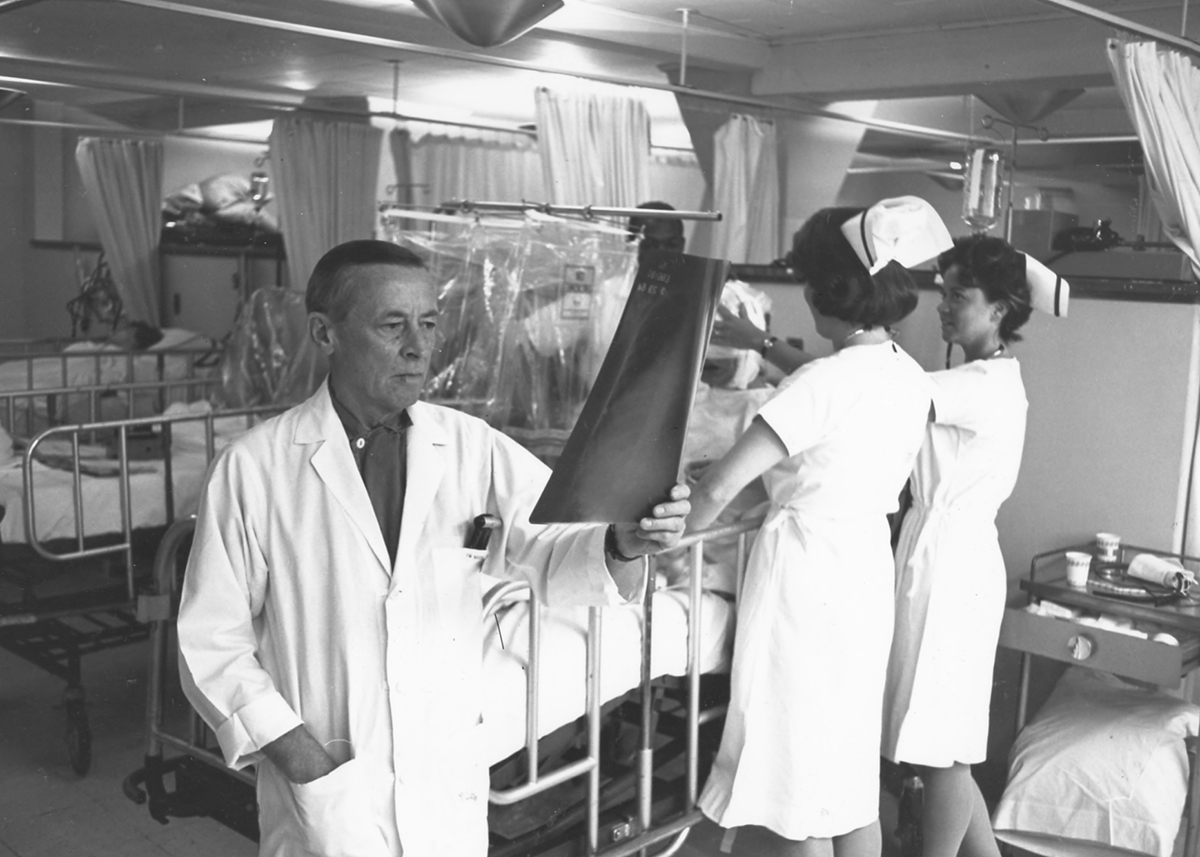
Research
Biomedical research began to emerge as a priority in the School of Medicine before its first decade was out.
Funding from corporations and foundations fueled important early studies such as David T. Smith, MD’s work on pellagra and Dr. Joseph and Dorothy Beard’s transformative research on equine encephalomyelitis, which helped establish the viability of killed-virus vaccines.

After World War II, with the expansion of the National Institutes of Health and a procession of visionary leaders at Duke, the School of Medicine grew to become one of the nation’s best and most innovative biomedical research institutions. Now the School of Medicine perennially ranks among the top 10 nationally in research funding by the NIH and boasts a long list of breakthrough discoveries in key fields.
The Beards’ early work heralded a tradition of excellence in immunological science that continues to this day. Duke’s standing as one of the nation’s leading cancer research institutions began with brain tumor research in the 1930s and accelerated when Duke was designated one of the nation’s first Comprehensive Cancer Centers in 1973. Duke researchers have made significant contributions to neuroscience, unraveling the mysteries of neurological disorders such as Alzheimer’s disease.
The Duke Databank for Cardiovascular Disease, created in 1969, remains a pioneering resource that helped establish Duke as a leader in the field and presaged the era of Big Data. The databank spawned the Duke Clinical Research Institute, the world’s largest clinical research institution.
In the 21st century, Duke’s commitment to translation and commercialization facilitates the rapid translation of scientific discoveries from the lab to the clinic, and its culture of interdisciplinary collaboration generates innovative approaches to complex biomedical questions. Researchers in the School of Medicine span the scope of scientific investigation, from basic research that explores the body’s fundamental systems and processes to clinical and translational research that accelerates the translation of scientific discoveries into clinical practice.
Through recent initiatives such as Duke Science and Technology, which has attracted a new wave of scientific stars, and Duke AI Health, which is leading the effective and ethical use of revolutionary new technologies, the School of Medicine is tackling the most vexing challenges in biomedical science.
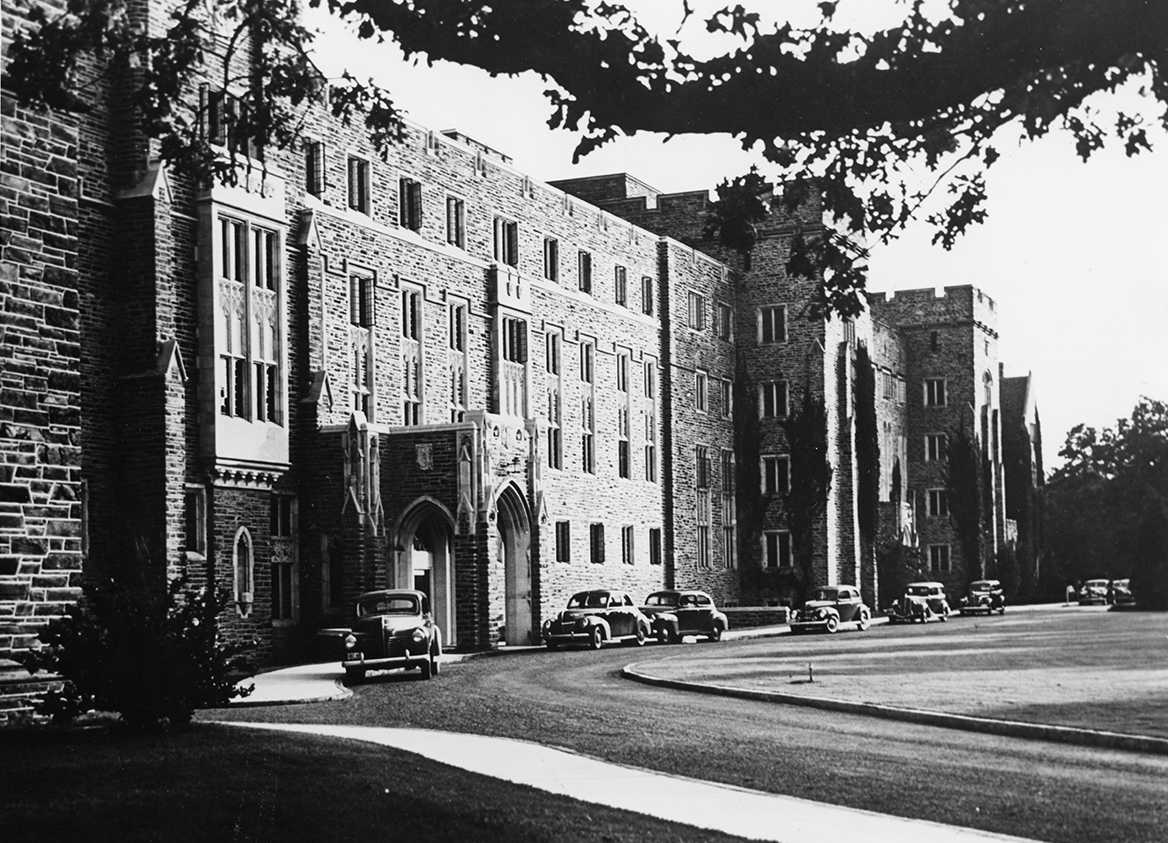
Patient Care
On Monday, July 21, 1930, the brand-new Duke University Hospital opened its doors to patients.
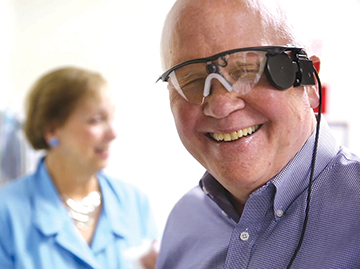
nation’s seventh “bionic eye,” a retinal
device based on research done at the
Duke Eye Center. The procedure enabled
the patient, Larry Hester, to see for the
first time in 33 years. (Shawn Rocco/Duke Health News Office). Explore more historical milestones.
Seventeen people came in for treatment: five cared for in the outpatient clinic and 12 admitted to the hospital.
That modest pace escalated rapidly. During its first decade, the hospital admitted over 144,000 inpatients and saw nearly half a million outpatient visits.
The acute demand was no surprise: indeed, it was the impetus for building the medical center in the first place. The need to improve health care in North Carolina was what drove the founders to include a hospital and schools of medicine and nursing in their plans for the university.
The degree to which they succeeded is evident in the remarkable growth in scope and impact that have turned a regional hospital into one of the nation’s premier health care institutions.
Every decade has seen bold expansions in Duke’s patient care operations. These include a dramatic growth in physical clinical space, not only on the central medical campus but across North Carolina. They include life-changing programs such as Duke Cancer Institute and the Hudson Eye Center. And they include groundbreaking clinical advances, from revolutionary improvements in surgical safety in the 1930s to an astonishing succession of heart transplant breakthroughs in the early years of the 2020s.
From its modest beginnings, what is now known as the Duke University Health System operates three full-service hospitals providing state-of-the-art care, with over 67,000 inpatient stays and nearly 5 million outpatient visits per year, as well as a broad network of primary and specialty care clinics and other services. Across that comprehensive network, Duke providers put the patient at the forefront of everything they do.
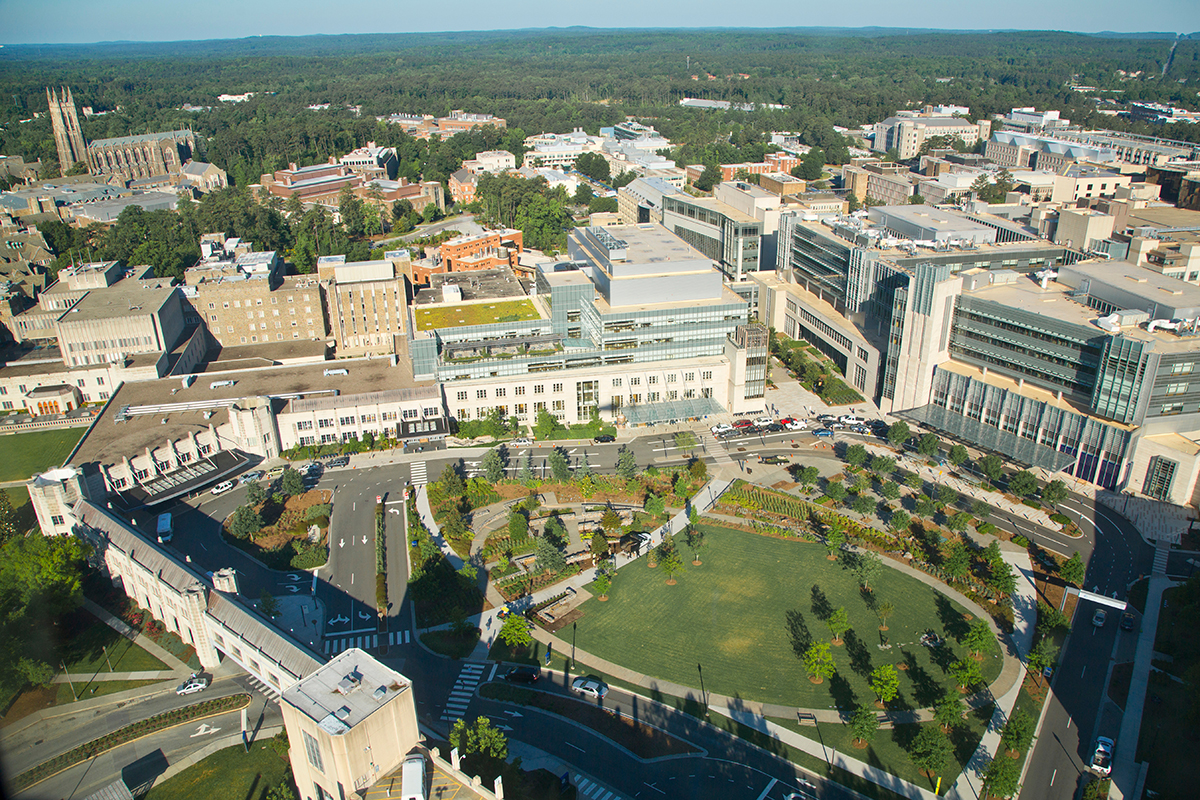
Hospital under the leadership of William G. Anlyan, MD. That expansion has continued with the additions
of the Duke Children’s Center, Duke Cancer Center, Duke Medicine Pavilion, and many more, making Duke’s care available to more
people than ever. Above photo taken in 2015. (Duke Photography). Explore more historical milestones.
Community Partnership
Until relatively recently, Duke University School of Medicine listed three official core missions: research, education, and patient care.
After Mary E. Klotman, MD, was appointed dean of the School of Medicine in 2017, she added a fourth: community partnership.
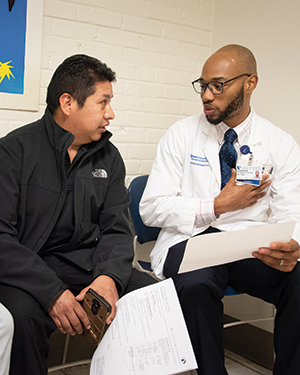
gets students into the community to see patients at the Holton Wellness Center. (LKT Photography). Explore more historical milestones.
In practice, the School of Medicine has been deeply interwoven with the local community all along. Local residents built the school and university buildings, and they are the heart of the skilled and dedicated staff that powers the Duke Health enterprise. Duke is the largest employer in Durham and the second-largest private employer in North Carolina. Some 85% of Durham residents have received health care at Duke.
Duke’s community engagements include partnerships with schools, churches, community institutions, and individuals. These collaborations promote health and wellness at the grassroots level by providing opportunities for connection, education, and support to individuals and families where they live, work, and play.
The School of Medicine’s community partnerships enrich all the school’s other missions. They help bridge gaps, foster communications, and build trust between the health care system and the people. They help train the next generation of health care professionals; through service-learning programs, volunteer opportunities, and community-based projects, students gain first-hand experience working with diverse populations and addressing social determinants of health. These immersive learning experiences broaden students’ perspectives and cultivate empathy, cultural competence, and a deep commitment to communities.
Most importantly, community partnerships improve health and save lives. In just the last two years, for example, a concerted community-engaged initiative by the Duke Department of Obstetrics and Gynecology has brought maternal morbidity in Durham County down by 40%, and by nearly 50% among Black patients.
By elevating community partnership to a core mission, the School of Medicine advances its overall goal of continually creating better ways to conduct research, teach and train, and deliver health care.

Explore the School of Medicine Historical Timeline
Dave Hart is editorial director for Office of Strategic Communications in the Duke University School of Medicine.
Story originally published in the Spring 2024 edition of DukeMed Alumni News.